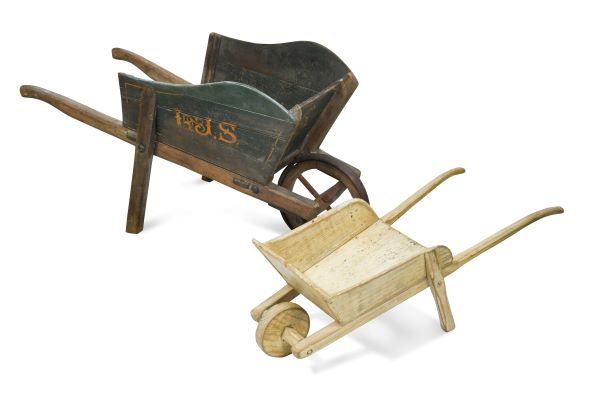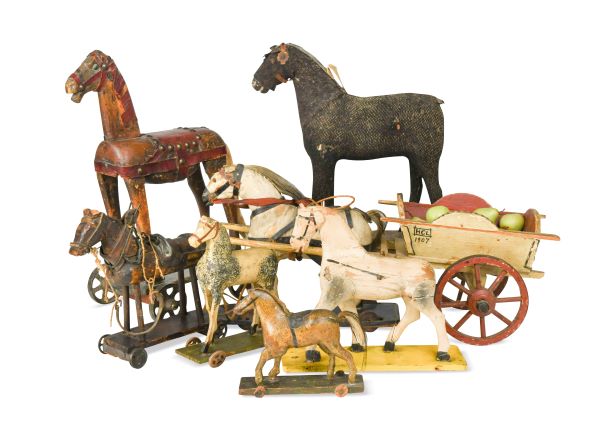Folk Art is in the spotlight in 2024, having been highlighted as an interior design trend for the year.
The recognition of folk art as a special category came about during the late 19th century, then known as “the art of the land.” It covers all forms of visual art, made in the context of folk culture, and is designed to be functional, using predominantly natural materials, with motifs taken from nature and simplified down. Folk art also includes objects which are experienced through the senses, by seeing and touching.
Folk Art has long been a passion for Patricia (Tricia) Jameson, one of the ‘old guard’ of interior decorators who forged her career in the 1970s and 80s, working for renowned names. Tricia became captivated by folk art thanks to the owner of an antiques shop close to where she lived in Notting Hill, she explains: "At the end of the road was this charming little antique shop. I was intrigued and became a frequent visitor which resulted in me becoming part of the team. The owner, Betty Lock, had a very individual eye and ploughed her own field in the world of antiques and interiors. She was particularly skilled at taking items from a commercial setting and placing them into a domestic environment, where they would become art pieces. It’s something that has been replicated subsequently with the ‘industrial look’, but Betty really was the trail blazer. She would buy such rudimentary items as stepladders and wheelbarrows and hang them on the wall. It was Betty who shaped my passion for such simple objects as decoration, which we would now more commonly term folk art”.

Decorative 'Folk Art' wheelbarrows from Patricia Jameson's collection
After many years managing Betty’s shop, Tricia started her own business in architectural and interior design, project-managing entire properties, working with architects, building surveyors and, in many cases, English Heritage. In the late 80s, she took the lease on a shop in Elliston Street and ‘Jameson Designs’ was officially open for business. “Betty’s influence was expressed in my dressing of the shop which I would describe as ‘the country style with an accent on rural simplicity.”
Tricia continues: “I worked with an architect downstairs in the basement, whilst upstairs, I really bought anything I fancied and put it into the shop – it didn’t matter if people didn’t buy it! We had a long table on which I had an array of miniature hand-crafted wheelbarrows, and a shelf in-front of the window where I would display artefacts on hay – I think everything looks lovely on hay.”
Tricia also had a love of horses and these would fill the shop. She adds: “I had hundreds of horses – people would bring them in to add to the collection which was really fun.”
It became a favourite haunt for the leading decorators of the time such as David Hicks and John Fowler (of Colefax and Fowler). Before long, Tricia was working on some prestigious properties in Belgravia, Mayfair and Chelsea, including the home of Imee Santos, who she later discovered was the daughter of Imelda Marcos.
Tricia’s professional style was very different to her own choice of decoration, she comments: “I would describe it as quite austere and almost aggressive, with lashings of chintz and swags, such was the ‘look’ at the time”. Many of the homes which Tricia shared with her (now late) husband, Conrad, a property developer, have been featured in the notable interiors magazines of the time, such as World of Interiors, House and Garden and Country Living.
Nowadays, life is a little less hectic, and having shared her bijou Chelsea apartment with all manner of decorative items from her past career, Tricia has reluctantly taken the practical step to declutter and let some of her most treasured ‘friends’ find new homes. It is some of these items which Cheffins are offering in the Fine Sale, including a collection of eight naïve model horses, mostly carved and painted wood, together with three carts (Lot 463, £200-£400) and two decorative painted wheelbarrows (or hand carts – lot 477 £150-£250).

A collection of model horses which Cheffins will be selling at auction
Christopher Halls, Associate at Cheffins, comments: “We are delighted to offer these pieces from the home of an interior decorator who was much admired and respected during her professional career. Folk-art items work equally well in traditional as well as contemporary schemes, particularly the latter where they can add a layer of patina, history and soul to a minimalist interior. Much-like Tricia herself, these items exude a warmth and charm, and we are sure others will find them appealing.”